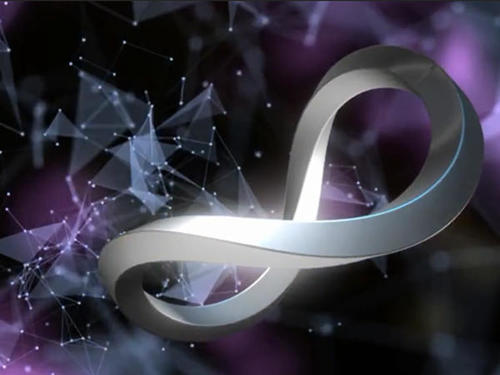Advanced Driver-Assistance Systems (ADAS) are making travel safer and easier for millions of car owners worldwide. Kyocera Corporation (President and CEO: Hideo Tanimoto) today announced a portfolio of innovations in development that promise to raise ADAS technology to new levels in the long-term quest toward fully autonomous vehicles.
Background
The central ADAS challenge lies in replicating a human driver's ability to interpret visual data. The human eye is a miracle of bioengineering -- and our brain not only combines the two different signals from our left and right eyes, but also interprets the result faster and more accurately than all but the most powerful computers. ADAS engineers strive to replicate this through digital sensing and processing. A dilemma quickly arises, however, as obtaining better data generally requires more and more sensors -- until the vehicle's microprocessors simply cannot integrate all the data in real time.
Kyocera is developing new solutions that apply convergence, miniaturization, and solid-state conversion for multifunctional sensors that can simplify ADAS design and help contain processing requirements. The company's latest ADAS innovations represent an integration of technologies in advanced materials, components, devices and communications infrastructure.
Cameras and LiDAR
Because cameras and LiDAR each offer unique benefits, they are often employed in combination. Cameras are ideal for detecting the color and shape of an object; LiDAR excels in measuring distance and creating highly accurate 3-dimensional images. However, digital imaging from two units that don't share the same optical axis exhibits a deviation error known as parallax. A computer can theoretically integrate two data channels to correct parallax error, but the resulting time lag creates an obstacle to any application requiring highly accurate, real-time information, such as driving.
■ World's First Camera-LiDAR Fusion Sensor Features Kyocera's Proprietary Technology
■ Features
1. Camera and LiDAR: Two devices in one unit1
Kyocera's patented Camera-LiDAR Fusion Sensor combines a camera with LiDAR to provide highly accurate images in real time. Because both devices use the same lens, the camera and LiDAR signals have identical optical axes, resulting in high-resolution 3D images with no parallax deviation.
2. Delay-free data: Ideal for automotive use
With a single unit1, the process of integrating camera and LiDAR data is greatly simplified, allowing timely and accurate object detection with no delay to improve driving safety.
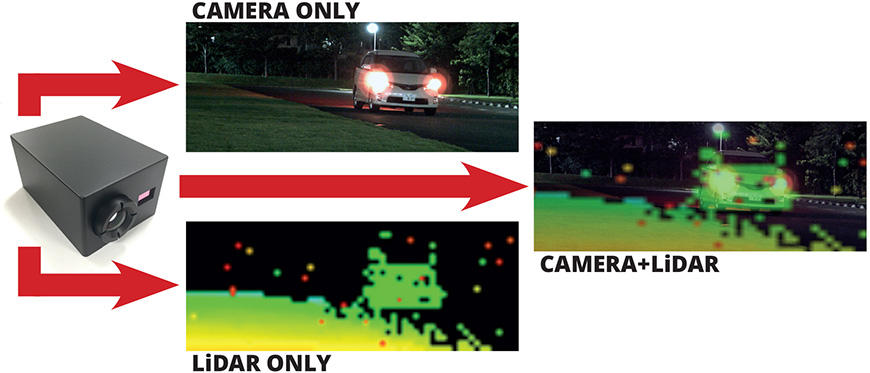
Imaging example from Kyocera's patented Camera-LiDAR Fusion Sensor
3. Durability is maximized by Kyocera's ceramic technology
While other LiDAR systems have used a motor to rotate a mirror continuously as they scan an image, mechanical assemblies introduce reliability issues amid the shock and vibration of normal driving. Kyocera has developed a solid-state solution using a micro-electromechanical system (MEMS) mirror that eliminates the conventional rotating assembly, based on advanced ceramic technology Kyocera developed as the world leader in ceramic semiconductor packaging.
■ Development status
Kyocera's Camera-LiDAR Fusion Sensor is currently under development and targeted for release by March 2025. It is expected to be used both in vehicles and in various other fields, such as construction, robotics, industrial equipment, and security systems that can recognize people and objects.
■ Reference
Camera-LiDAR Fusion Sensor Video: https://www.youtube.com/watch?v=UFvYYOEuObo
1 Kyocera has applied for patents on intellectual property integrating camera and LiDAR technology in five regions. Patents have already been registered in Japan and the United States, including US 10838044, with patents pending in Europe, China and South Korea.
Millimeter-Wave Radar
Radar is based on the same concept as LiDAR, but uses radio waves instead of light to measure distance, speed, and angle by calculating time and frequency differences in the returning signal. One key feature of radar is that its accuracy is not easily degraded by weather or backlighting.
Because millimeter-wave radar is widely used in ADAS applications, many vehicle platforms incorporate multiple radar sensors for various purposes. For example, individual radar sensors are commonly installed for front view, blind-spot, collision detection, parking-assist, exit detection, and/or fully-automatic parking, among others. As a result, ADAS system complexity and processing requirements are continually rising.
■ Kyocera's Multifunctional Millimeter-Wave Radar Module
Kyocera has developed a multifunctional millimeter-wave radar technology that can detect multiple objects at different distances and directions using a single millimeter-wave sensor.
■ Features
1.Miniaturization achieved using 79GHz band
By using the 79GHz band, Kyocera has succeeded in miniaturizing antenna volume and area, resulting in a compact module form factor measuring just 48 × 59 × 21mm.
2. Highly accurate distance measurement
Millimeter-wave radar range accuracy depends on the bandwidth of the frequencies used. Kyocera's Multifunctional Millimeter-Wave Radar Module takes full advantage of its high bandwidth -- 77GHz to 81GHz, with 4GHz width. As a result, it can deliver highly precise distance measurements, accurate to within just 5cm (about 2").
3. Multi-function radar support
Kyocera's technology supports multi-function radar applications, which can independently set multiple detection modes with different detection distances and directions. This unique function brings new value to millimeter-wave radar through beam-forming technology. In general, conventional millimeter-wave radar senses the same spot at regular intervals (for example, 50ms, 100ms, etc.). In contrast, Kyocera's high-speed switching allows for simultaneous sensing of multiple areas. As a result, a single module can offer blind-spot detection, free-space detection, and/or other sensing functions simultaneously.
4. Reduced system cost and complexity
With Kyocera's millimeter-wave technology, functions currently requiring multiple sensors can be integrated through high-speed switching into a single radar module. This allows the total number of radar sensors to be reduced, contributing to lower cost and simpler design. In principle, modules providing three different sensing functions could allow a system of 12 single-function sensors to be replaced with a future system of just four multifunctional modules.
■ Kyocera's two technologies for multi-functional millimeter-wave radar
Kyocera's millimeter-wave radar innovation takes advantage of "adaptive-array" antenna technology, which the company developed for commercial telecommunications network infrastructure. This beam-forming transmit and receive technology allows fast and accurate estimation of the receive angle of multiple signals, and arbitrary setting of both transmit and receive timing. As a result, mutual interference with other millimeter-wave radar signals can be reduced or eliminated.
Additionally, Kyocera's high-frequency organic substrate materials help ensure low loss and high efficiency in waveguides (feeder lines) and microstrip antennas. By custom-optimizing millimeter-wave antennas for specific applications, multiple functions can be integrated efficiently and effectively -- a key feature of multifunctional millimeter-wave radar.
■ Status of development
Kyocera is currently developing a Multifunctional Millimeter-Wave Radar Module that utilizes 60GHz radar in addition to conventional 77GHz and 79GHz radar. Since the 60GHz band can be used both indoors and in vehicles, it is expected to have a variety of applications. In addition to ADAS, this module will be able to detect children left in cars, analyze the vibration waveforms and spectra of industrial machinery, or detect the heartbeat and respiration of a sleeping patient in a medical institution or nursing facility. A timetable for availability will be announced.
■ Reference
Multifunctional Millimeter-Wave Radar Module video:
https://www.youtube.com/watch?v=GveWeRCUpuI
Background
The central ADAS challenge lies in replicating a human driver's ability to interpret visual data. The human eye is a miracle of bioengineering -- and our brain not only combines the two different signals from our left and right eyes, but also interprets the result faster and more accurately than all but the most powerful computers. ADAS engineers strive to replicate this through digital sensing and processing. A dilemma quickly arises, however, as obtaining better data generally requires more and more sensors -- until the vehicle's microprocessors simply cannot integrate all the data in real time.
Kyocera is developing new solutions that apply convergence, miniaturization, and solid-state conversion for multifunctional sensors that can simplify ADAS design and help contain processing requirements. The company's latest ADAS innovations represent an integration of technologies in advanced materials, components, devices and communications infrastructure.
Cameras and LiDAR
Because cameras and LiDAR each offer unique benefits, they are often employed in combination. Cameras are ideal for detecting the color and shape of an object; LiDAR excels in measuring distance and creating highly accurate 3-dimensional images. However, digital imaging from two units that don't share the same optical axis exhibits a deviation error known as parallax. A computer can theoretically integrate two data channels to correct parallax error, but the resulting time lag creates an obstacle to any application requiring highly accurate, real-time information, such as driving.
■ World's First Camera-LiDAR Fusion Sensor Features Kyocera's Proprietary Technology
| Prototype: Kyocera's Camera-LiDAR Fusion Sensor |
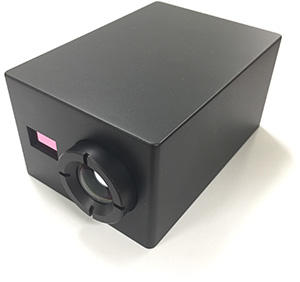 |
1. Camera and LiDAR: Two devices in one unit1
Kyocera's patented Camera-LiDAR Fusion Sensor combines a camera with LiDAR to provide highly accurate images in real time. Because both devices use the same lens, the camera and LiDAR signals have identical optical axes, resulting in high-resolution 3D images with no parallax deviation.
2. Delay-free data: Ideal for automotive use
With a single unit1, the process of integrating camera and LiDAR data is greatly simplified, allowing timely and accurate object detection with no delay to improve driving safety.

Imaging example from Kyocera's patented Camera-LiDAR Fusion Sensor
3. Durability is maximized by Kyocera's ceramic technology
While other LiDAR systems have used a motor to rotate a mirror continuously as they scan an image, mechanical assemblies introduce reliability issues amid the shock and vibration of normal driving. Kyocera has developed a solid-state solution using a micro-electromechanical system (MEMS) mirror that eliminates the conventional rotating assembly, based on advanced ceramic technology Kyocera developed as the world leader in ceramic semiconductor packaging.
■ Development status
Kyocera's Camera-LiDAR Fusion Sensor is currently under development and targeted for release by March 2025. It is expected to be used both in vehicles and in various other fields, such as construction, robotics, industrial equipment, and security systems that can recognize people and objects.
■ Reference
Camera-LiDAR Fusion Sensor Video: https://www.youtube.com/watch?v=UFvYYOEuObo
1 Kyocera has applied for patents on intellectual property integrating camera and LiDAR technology in five regions. Patents have already been registered in Japan and the United States, including US 10838044, with patents pending in Europe, China and South Korea.
Millimeter-Wave Radar
Radar is based on the same concept as LiDAR, but uses radio waves instead of light to measure distance, speed, and angle by calculating time and frequency differences in the returning signal. One key feature of radar is that its accuracy is not easily degraded by weather or backlighting.
Because millimeter-wave radar is widely used in ADAS applications, many vehicle platforms incorporate multiple radar sensors for various purposes. For example, individual radar sensors are commonly installed for front view, blind-spot, collision detection, parking-assist, exit detection, and/or fully-automatic parking, among others. As a result, ADAS system complexity and processing requirements are continually rising.
■ Kyocera's Multifunctional Millimeter-Wave Radar Module
| Prototype: Kyocera's Multifunctional Millimeter Radar Module, 48 × 59 × 21mm |
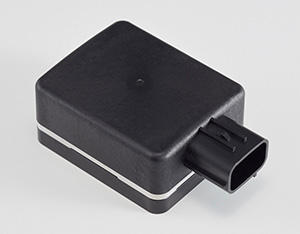 |
Kyocera has developed a multifunctional millimeter-wave radar technology that can detect multiple objects at different distances and directions using a single millimeter-wave sensor.
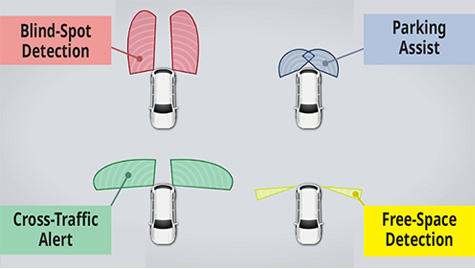 Conventional technology: Because each sensor performs a single function, an entire system requires many sensors. |
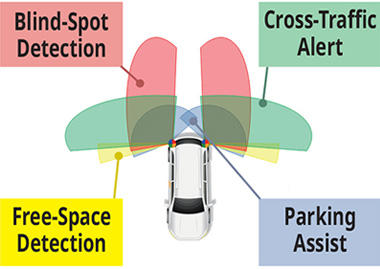 Kyocera technology: Two multi-function sensors simplify the system, delivering up to six of the eight functions shown. |
■ Features
1.Miniaturization achieved using 79GHz band
By using the 79GHz band, Kyocera has succeeded in miniaturizing antenna volume and area, resulting in a compact module form factor measuring just 48 × 59 × 21mm.
2. Highly accurate distance measurement
Millimeter-wave radar range accuracy depends on the bandwidth of the frequencies used. Kyocera's Multifunctional Millimeter-Wave Radar Module takes full advantage of its high bandwidth -- 77GHz to 81GHz, with 4GHz width. As a result, it can deliver highly precise distance measurements, accurate to within just 5cm (about 2").
3. Multi-function radar support
Kyocera's technology supports multi-function radar applications, which can independently set multiple detection modes with different detection distances and directions. This unique function brings new value to millimeter-wave radar through beam-forming technology. In general, conventional millimeter-wave radar senses the same spot at regular intervals (for example, 50ms, 100ms, etc.). In contrast, Kyocera's high-speed switching allows for simultaneous sensing of multiple areas. As a result, a single module can offer blind-spot detection, free-space detection, and/or other sensing functions simultaneously.
4. Reduced system cost and complexity
With Kyocera's millimeter-wave technology, functions currently requiring multiple sensors can be integrated through high-speed switching into a single radar module. This allows the total number of radar sensors to be reduced, contributing to lower cost and simpler design. In principle, modules providing three different sensing functions could allow a system of 12 single-function sensors to be replaced with a future system of just four multifunctional modules.
■ Kyocera's two technologies for multi-functional millimeter-wave radar
Kyocera's millimeter-wave radar innovation takes advantage of "adaptive-array" antenna technology, which the company developed for commercial telecommunications network infrastructure. This beam-forming transmit and receive technology allows fast and accurate estimation of the receive angle of multiple signals, and arbitrary setting of both transmit and receive timing. As a result, mutual interference with other millimeter-wave radar signals can be reduced or eliminated.
Additionally, Kyocera's high-frequency organic substrate materials help ensure low loss and high efficiency in waveguides (feeder lines) and microstrip antennas. By custom-optimizing millimeter-wave antennas for specific applications, multiple functions can be integrated efficiently and effectively -- a key feature of multifunctional millimeter-wave radar.
■ Status of development
Kyocera is currently developing a Multifunctional Millimeter-Wave Radar Module that utilizes 60GHz radar in addition to conventional 77GHz and 79GHz radar. Since the 60GHz band can be used both indoors and in vehicles, it is expected to have a variety of applications. In addition to ADAS, this module will be able to detect children left in cars, analyze the vibration waveforms and spectra of industrial machinery, or detect the heartbeat and respiration of a sleeping patient in a medical institution or nursing facility. A timetable for availability will be announced.
■ Reference
Multifunctional Millimeter-Wave Radar Module video:
https://www.youtube.com/watch?v=GveWeRCUpuI



